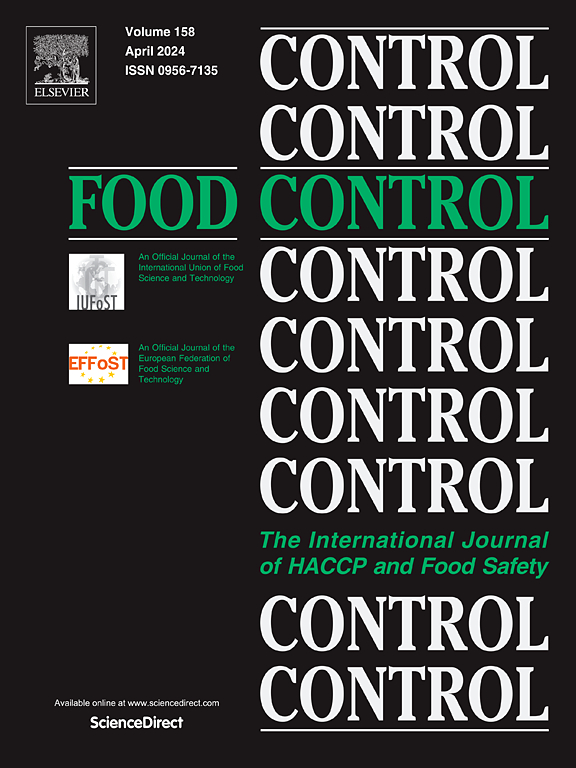Biocontrol mechanisms and antimicrobial gene expression of Bacillus 63–10 and impact on microbial ecosystems of fruit; quality and shelf life
IF 5.6
1区 农林科学
Q1 FOOD SCIENCE & TECHNOLOGY
引用次数: 0
Abstract
Postharvest fruit deterioration due to microbial spoilage presents significant economic challenges in agricultural countries. Biocontrol has become a widely developed and applied method for fruit preservation. This study investigated the genes associated with antimicrobial agent synthesis in Bacillus 63–10 and its inhibitory mechanisms when used as a biocontrol agent on fruit surfaces, using lychee as a model. Whole genome sequencing (WGS) revealed that Bacillus 63–10 is closely related to Bacillus velezensis and Bacillus amyloliquefaciens, exhibiting non-pathogenic characteristics and having no resistance genes. End-point PCR testing identified five antimicrobial genes; baeA, bacA, fenD, srfAA, and Uni, responsible for antimicrobial activity against spoilage microbes in vitro. Bacillus 63–10 coated onto fresh lychee surfaces showed significantly lower levels of spoilage bacteria (<1.00–0.83 log CFU/cm2) and yeast and mold (1.63–1.95 log CFU/cm2) from days 3–7, compared to untreated lychees, which exhibited 2.16–7.06 and 2.67–4.00 log CFU/cm2, respectively. The application of Bacillus 63–10 on fresh lychee fruits helped preserve their physicochemical properties, including improved pericarp color, reduced disease incidence, and minimized weight loss, effectively extending the shelf life by more than 3 days. Gene expression analysis of lychee pericarp revealed dynamic patterns, baeA was detected daily, bacA on day 2, and fenD on days 3 and 4. These expression patterns correlated with the types and numbers of spoilage microbes on the fruit's surface. The expression of these genes suggests that Bacillus 63–10 adapts to the presence of spoilage microbes, effectively reducing their populations. These findings provide key insights into biocontrol mechanisms that can be optimized for developing effective biocontrol strategies. This study also demonstrates the potential of Bacillus 63–10 as an effective biocontrol agent for preserving fresh fruits and reducing postharvest losses.
求助全文
约1分钟内获得全文
求助全文
来源期刊

Food Control
工程技术-食品科技
CiteScore
12.20
自引率
6.70%
发文量
758
审稿时长
33 days
期刊介绍:
Food Control is an international journal that provides essential information for those involved in food safety and process control.
Food Control covers the below areas that relate to food process control or to food safety of human foods:
• Microbial food safety and antimicrobial systems
• Mycotoxins
• Hazard analysis, HACCP and food safety objectives
• Risk assessment, including microbial and chemical hazards
• Quality assurance
• Good manufacturing practices
• Food process systems design and control
• Food Packaging technology and materials in contact with foods
• Rapid methods of analysis and detection, including sensor technology
• Codes of practice, legislation and international harmonization
• Consumer issues
• Education, training and research needs.
The scope of Food Control is comprehensive and includes original research papers, authoritative reviews, short communications, comment articles that report on new developments in food control, and position papers.
 求助内容:
求助内容: 应助结果提醒方式:
应助结果提醒方式:


